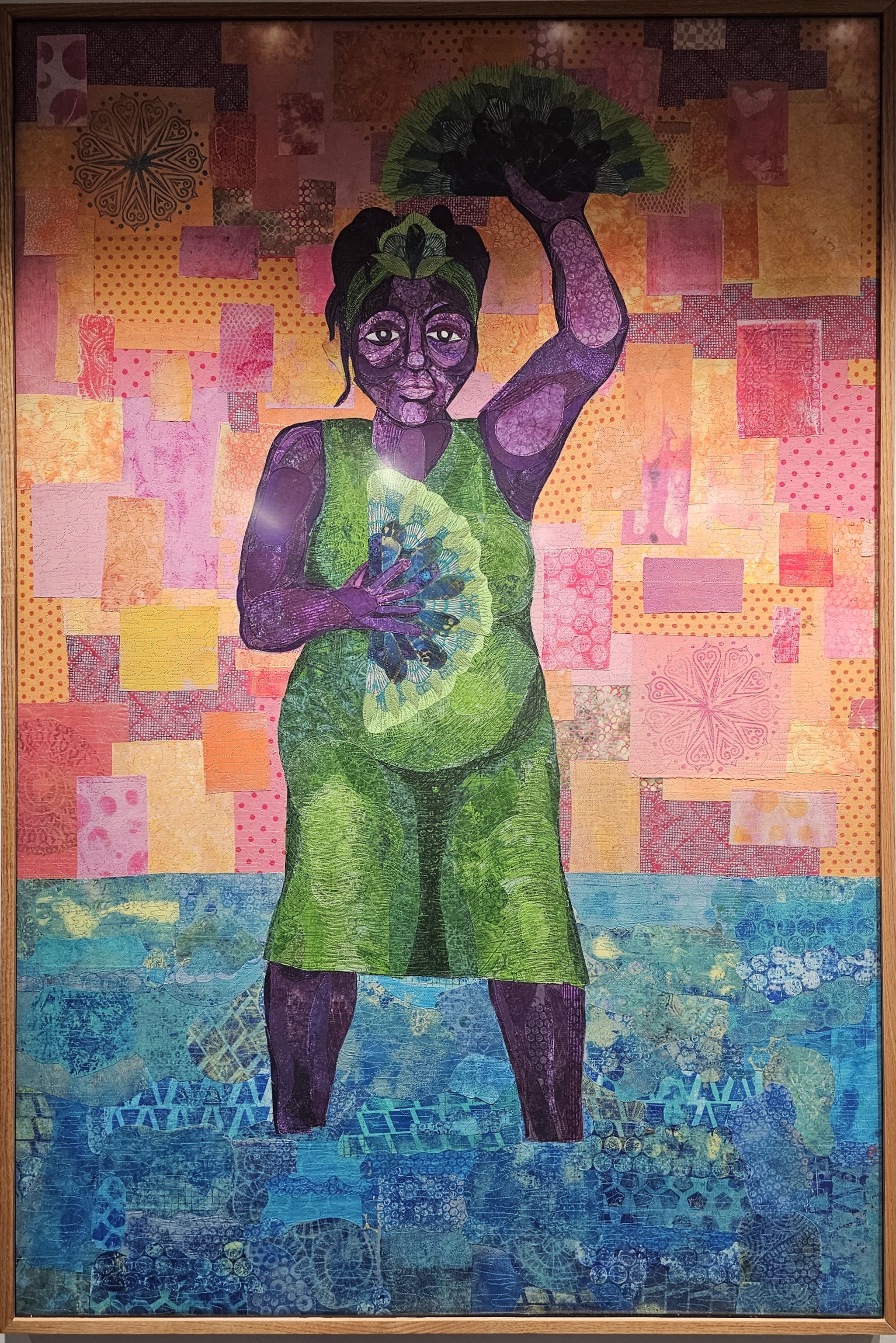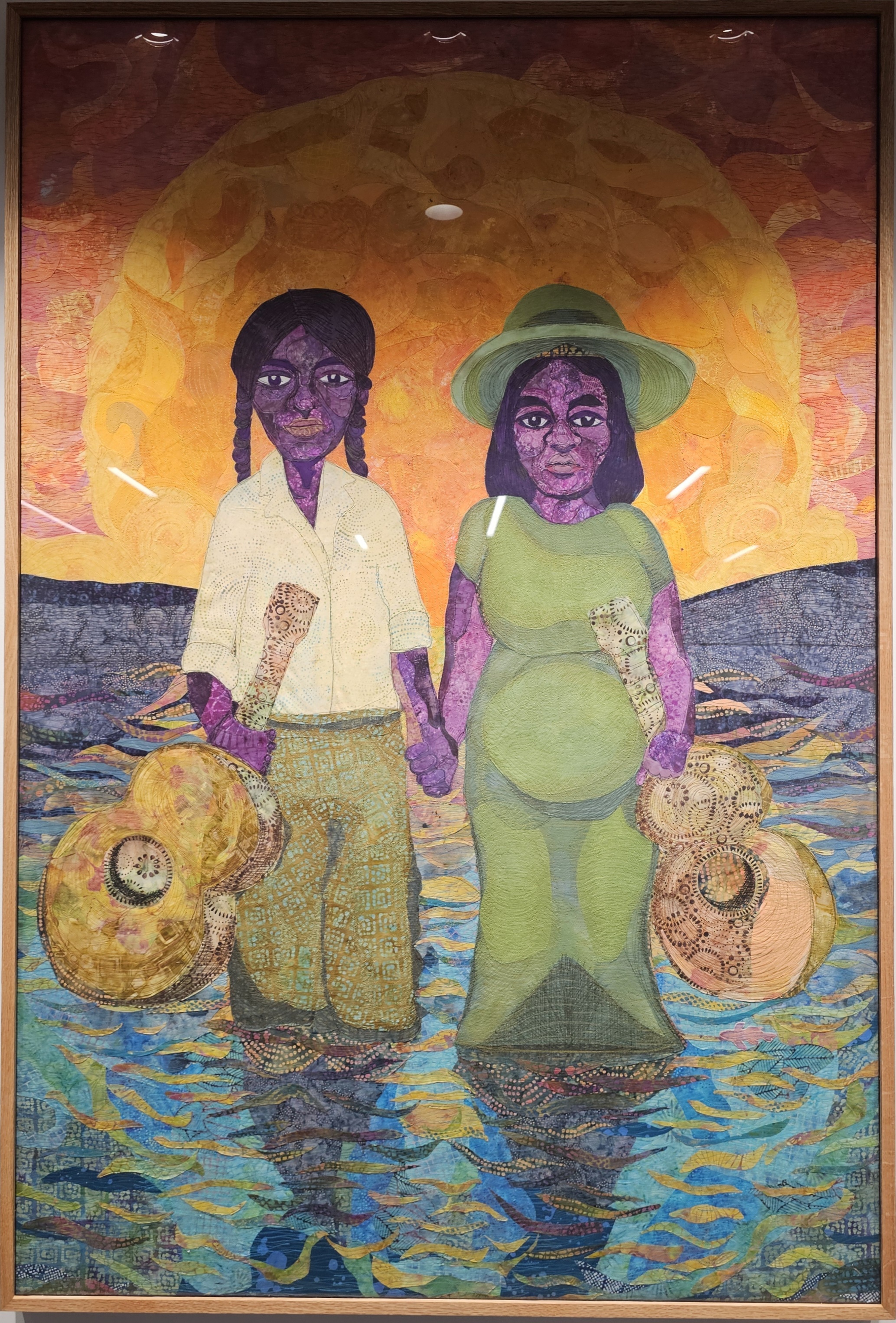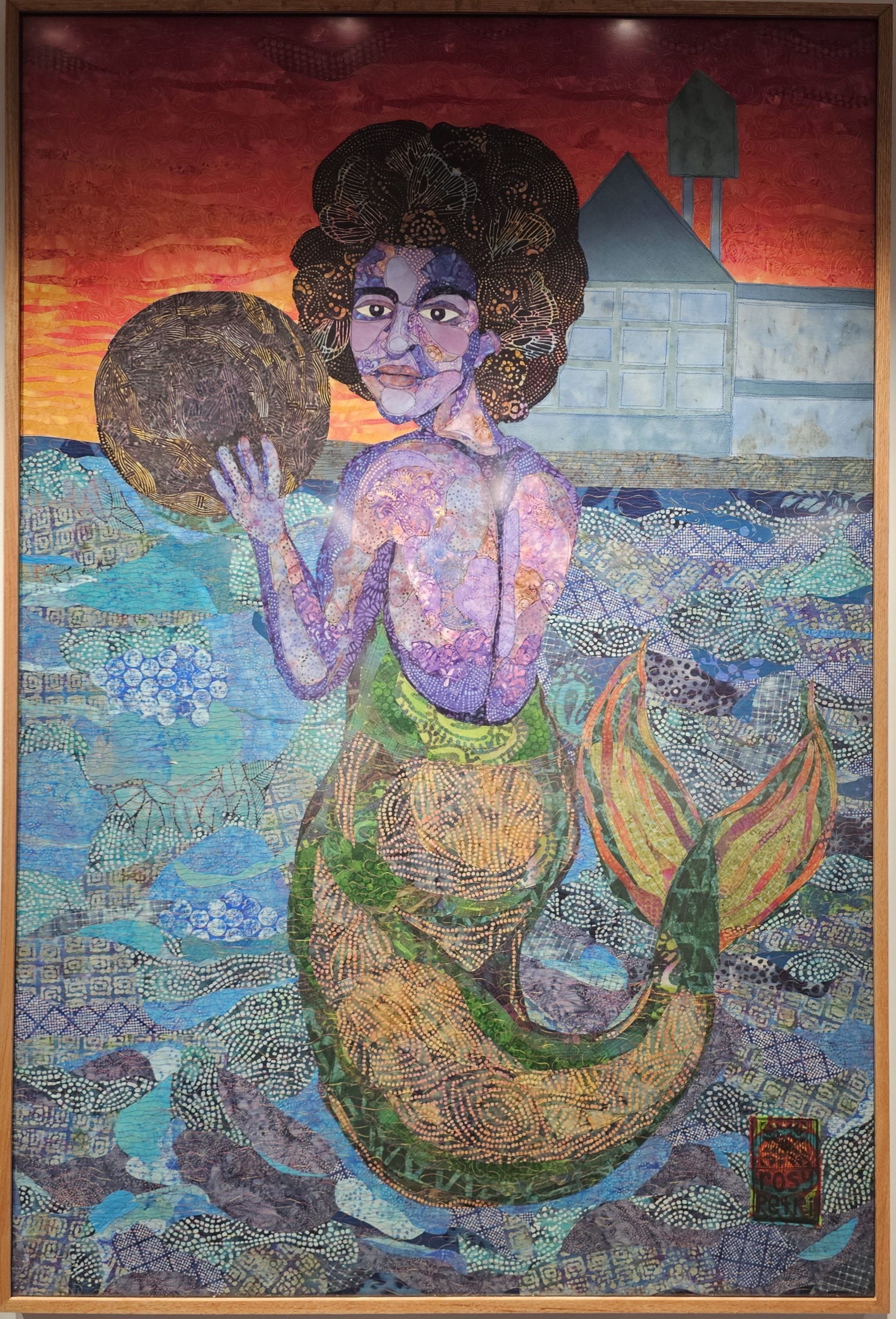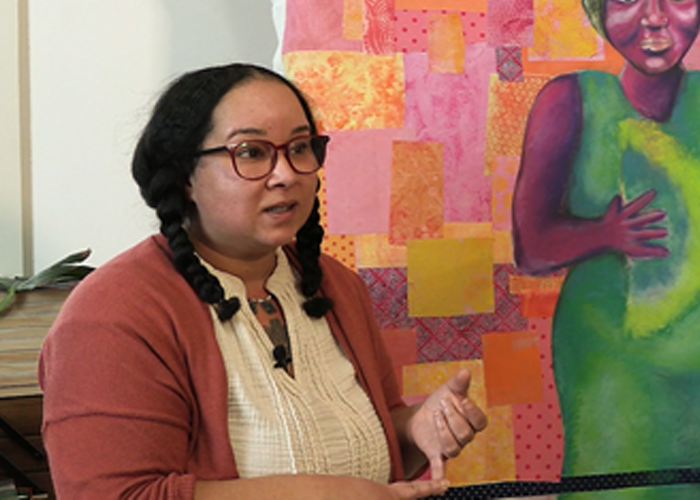rosy petri
Ma Rainey

Petri chose to feature Ma Rainey as the first piece of the series because of her connection to Paramount Records and the role she played in establishing the blues as an accepted art form. Often called “the mother of the blues,” Ma Rainey recorded one of the most famous blues songs of all time, See See Rider for Paramount in 1924 alongside a young Louis Armstrong. There are roughly 150 recorded versions of See See Rider, with artists sometimes changing the spelling to C.C. Rider.
The piece also tells the story of the Great Migration of African Americans from the south. Rainey, a queer black woman from Alabama, migrated from the South seeking the promise of freedom and acceptance the North symbolized. The lighter, softer shades of pink and sherbet used in Ma Rainey help to illustrate the emotion of hope for equality many African Americans dreamed awaited them in the North. The soft sunset colors begin the story with hope and allude to the reality of sundown towns and racial terror they presented to Black people traveling through America under Jim Crow laws.
Geeshie and L.V.

The second piece in the series features the images of Geeshie Wiley and Elvie Thomas, blues artists who recorded at Paramount Records in the early 1930s. Few artists are more mysterious than Geeshie and Elvie who despite decades of research little is known about their early lives. In a flooded recording studio in Grafton, Wisconsin the two recorded a group of songs that many consider some of the most influential examples of pre-World War II blues ballads.
Continuing with the theme of migration to the North, Petri’s image of the two musicians establishes a darker tone of promise unfulfilled. Wiley and Thomas not only were musicians but were also lovers. Some legends of the two state Wiley, who was married, killed her husband in self-defense after he discovered their affair and spent the rest of her life in jail. While the murder and affair are considered fact, many of the details were lost because the police records on Geeshie’s husband’s murder were thought important enough to be retained. The hazy sunset in the river shows the reality of violence that haunts Black folks with intersectional marginalized identities: in this case in particular the intersections are Blackness, queerness, and womanhood. They are standing together in the river in hopes that their spirits found a place of peace in the other world.
Mami FreshWata

The water spirit plays an important role in many African cultures. Petri uses this concept to tell the tale of the African diaspora where survivors of the Middle Passage brought many of their traditions with them in an attempt to preserve their culture. According to Petri, “If there are mermaids where there are black people why wouldn’t there be mermaids in the story of Paramount Records.”
This final piece in the series closes out the tale of the Great Migration as it became clear that the equality sought in the North would not be found. Yet it also portrays the hope that one day equality can be achieved. The water spirit is pictured in the waters near Grafton holding one of the master recordings from a Paramount Records blues artist. This signifies the sadness in the loss of these master works but also the hope that, “a black mermaid gathered them up and took them over to wherever over is for us.” These recordings are foundational for establishing the impact of diaspora musicians, especially queer Black Women, changing the face of the American soundscape. The spirit of the water is a part of diasporan spirituality and allows us to store our hopes in an untouchable spiritual realm where they cannot be destroyed.

About rosy petri
rosy petri is a mother, a self-taught artist and a multi-media storyteller. Born in Milwaukee, Wisconsin, much of her art is inspired by her roots and her ancestors being survivors of the Middle Passage. Her multidisciplinary works fuse fabric portraiture, multimedia storytelling, and illustration as an act of witness.
In 2021, petri served as the inaugural Artist-in-Residence at the bell hooks center at Berea College and served in the same capacity at the Pfister Hotel in Milwaukee, WI. In 2020, she was selected as a Mary L Nohl Emerging Artist Fellow and a Mildred L. Harpole Artist of the Year from the City of Milwaukee Arts Board.
petri’s work can be viewed in several prestigious collections, including the bell hooks Center at Berea College, Pfister Hotel, Hunger Task Force, Northwestern Mutual, African American Chamber of Commerce of Wisconsin, Planned Parenthood of Wisconsin and the Milwaukee County Courthouse.
Q&A with rosy petri
